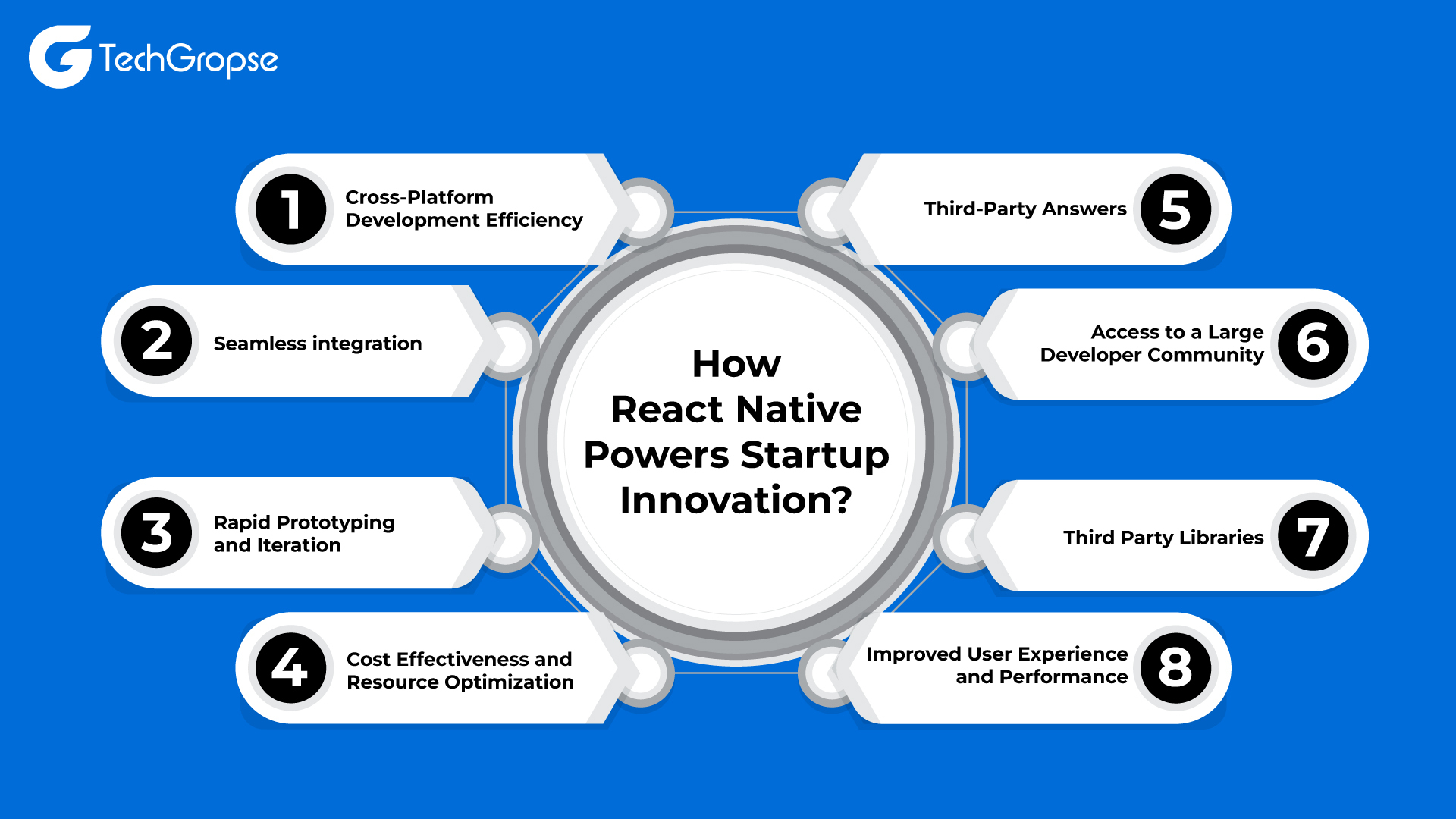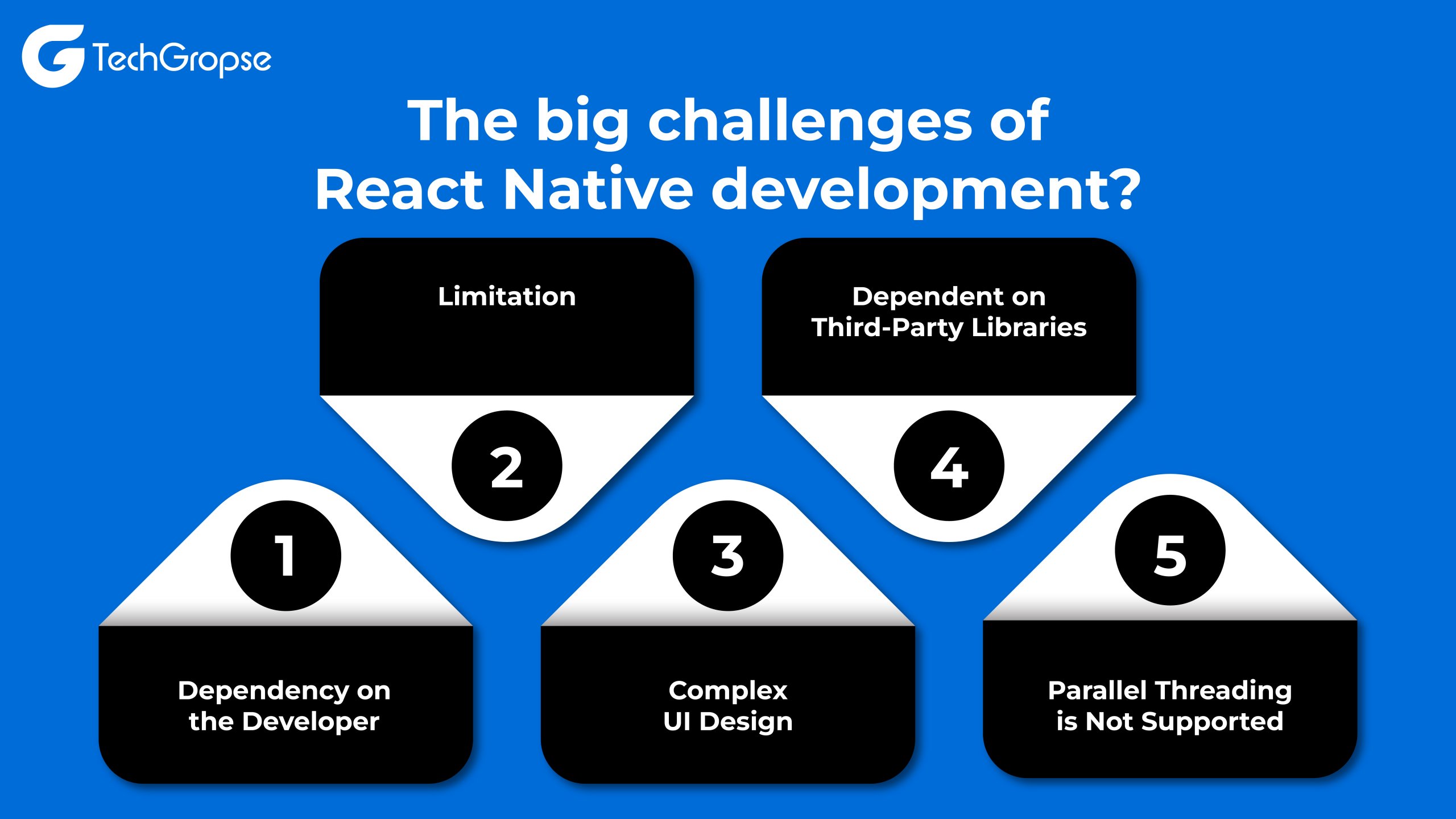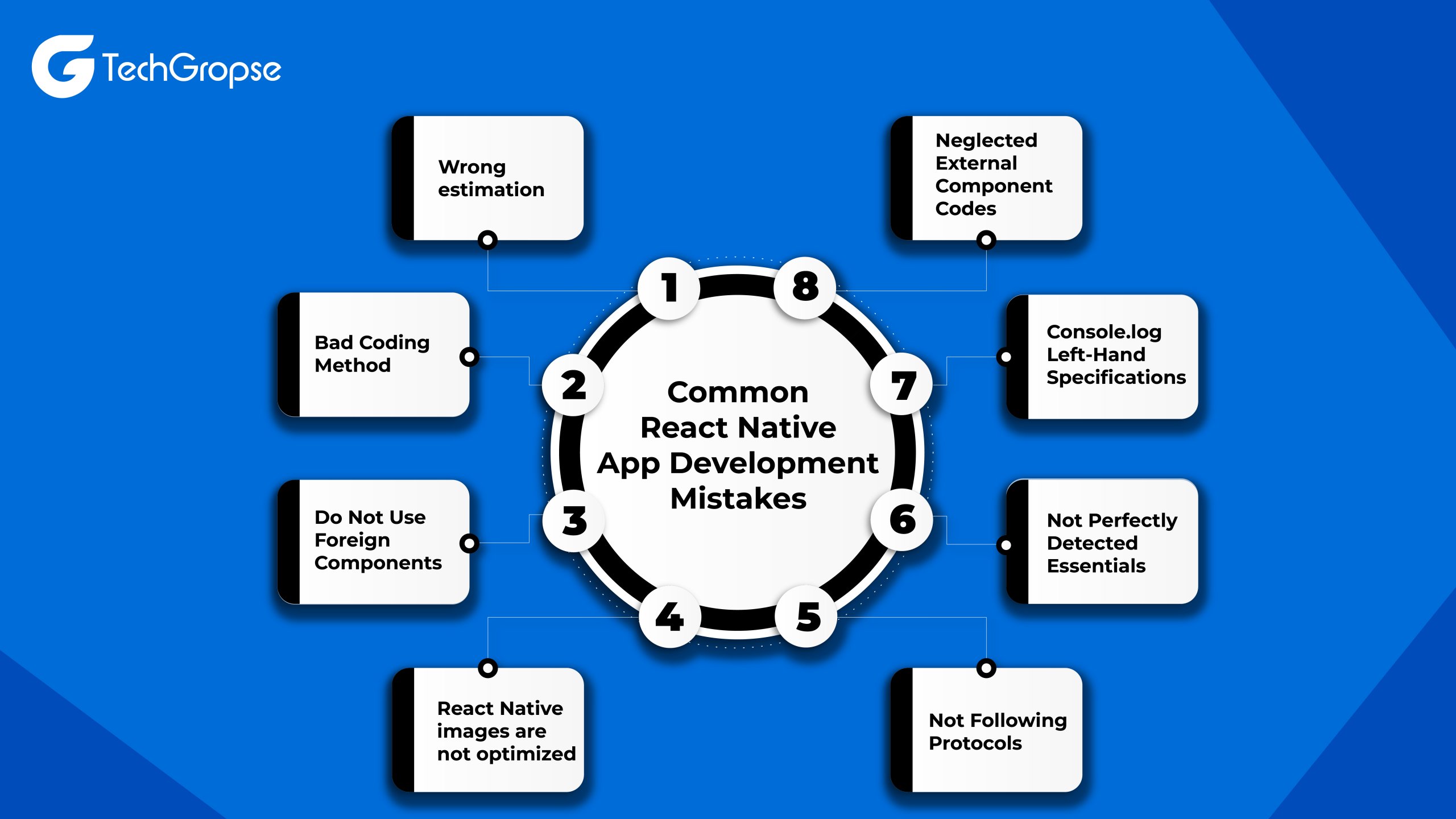Facebook, Pinterest and Instagram are integrated open source React Native frameworks. According to the report, the development of React Native will reach 1.9 million by the end of 2024. This means that the demand for this framework has increased, making it valuable. This means that you need to hire a dedicated React Native developer to implement this framework.
If you are a startup that wants to accelerate innovation and stay ahead of the competition in app development, React Native is the right choice for you. In this show, we explore the benefits of the React Native framework for startups.
React Native Framework Explained
React Native is the perfect choice. As a versatile framework, it offers a seamless way to develop applications that can be used on multiple platforms. In addition, it provides a consistent and seamless user experience for both Android and iOS mobile phone users. Want to know what React Native is?
It is a popular tool that allows developers to create mobile apps for Android and iOS using JavaScript. That’s why it’s a good idea to hire a dedicated React Native developer. Do you have an idea about the creators of React Native? Facebook launched the concept in 2015.
It is also open source and works to build web-based ideas into mobile apps. Additionally, developers can use the same code to build apps for different mobile operating systems.
Among the most popular development frameworks in 2022, React Native stands out for its ability to create exceptional applications that work seamlessly across multiple platforms while maintaining a high level of quality.
Additionally, aspects that increase the complexity of the technology include its ability to be reused, reloaded and integrated with external plug-ins from third party service providers. Top tech companies like Instagram, Bloomberg, Discord, Skype, Tesla and Walmart have used the power of React Native to develop their apps.
How React Native Powers Startup Innovation?

We understand the nuances that make React Native essential for startups looking to innovate, accelerate time to market, and optimize development resources.
-
Cross-Platform Development Efficiency
React Native is an open source framework widely known for developing cross-platform mobile applications. It allows developers to write mobile apps in JavaScript and use features from the React JavaScript library to create user interfaces. React Native allows developers to create native mobile apps that run on both iOS and Android platforms. The framework includes a robust set of ready-made components and APIs that make it easy to create responsive, high-performance, user-friendly apps.
Example: Incorporating React Native into the development of a weather program. React Native allows developers to create a single code base and create an app that runs on iOS and Android. They can use ready-made components such as buttons, text fields, and image components to create an intuitive and visually appealing weather app. The application can also use features such as location services to display accurate weather information based on the user’s location.
-
Seamless integration
React Native’s cross-platform capabilities allow developers to write code once and deploy it on both platforms, saving incredible time and resources compared to traditional native app development. Startups have the ability to integrate platform-specific code into a shared codebase when using React Native.
This flexibility enables the use of platform-specific features, which ensures that mobile apps that launch provide an original user experience on each platform. For example, adding platform-specific components or APIs to other functions using React Native’s bridging mechanism allows startups to develop highly customized platform-specific experiences without giving up the benefits of cross-platform development.
-
Rapid Prototyping and Iteration
Rapid prototyping and iteration are critical in the early stages of innovation, where rapid prototyping, iterating, and improving applications are needed. React Native’s fast loading feature acts as a technical enabler for this iterative process, providing developers with instant feedback on code changes without recompiling the entire application. It allows startups to quickly test new features, gather user feedback, and improve application functionality in real time, paving the way for agile and responsive development.
Example. Let’s say you’re a young entrepreneur trying to improve the user interface of your app. Hot reloading allows developers to see and adjust user interface changes in a running application, eliminating the need for lengthy build and deployment processes, resulting in fast builds and quick updates.
In addition, React Native’s real-time refresh feature enables instant updates of the running utility to quickly track changes in software behavior and updates so that developers can immediately feel the impact of changes. This development feedback loop also enables startups to keep pace with rapidly changing market demands, thereby helping to create a culture of continuous innovation and excellence in mobile app development.
-
Cost Effectiveness and Resource Optimization
The cost effectiveness of mobile app development is a major headache for most startups. React Native has a strong value proposition because it significantly reduces the complexity and resource requirements of cross-platform application development. In addition to a visible reduction in development time and effort, startups can save significantly by using React Native, which relies on just one team to develop both iOS and Android in JavaScript, instead of having two separate teams for the two operating systems.
-
Third-Party Answers
Furthermore, React Native’s versatile ecosystem of third-party libraries and components lends itself well as a resource-efficient platform framework to startup optimizations. Startups are offered a range of pre-built elements and libraries to leverage existing solutions instead of building their own solutions, reducing development costs and speeding up application delivery.
Imagine a startup interested in integrating live chat into its mobile app. Using third-party libraries implemented in React Native, this startup can quickly integrate this feature into their app with minimal development effort while optimizing time and resources and improving functionality.
-
Access to a Large Developer Community
React Native’s thriving community is a cornerstone of strategic advantage for startups. Thanks to the many open source libraries, modules and tools provided by the community, startups can easily update their application’s features for innovation and efficiency. For example, let’s say a startup wants to add features like geolocation services or augmented reality to its app. In this case, the powerful ecosystem of third-party libraries of React Native offers a wide range of ready-made solutions that can be perfectly integrated to enrich the functionality of the application.
-
Third Party Libraries
Thanks to the strong community support built into React Native, startups can quickly access solutions to technical challenges and roadblocks. This collaborative atmosphere fosters the exchange of best practices, knowledge sharing and rapid problem-solving, helping startups leverage the collective knowledge of the innovation and problem-solving community to ensure their disruptive application ideas come to life.
Seamless installation with existing codebases and technologies Many startups have the backends, APIs, and infrastructure they need to operate. React Native is a seamless interaction with native code and current technologies, providing startups with an easy integration path to benefit from their already invested mobile innovations.
Startup companies can take advantage of React Native’s capabilities to work with native code, which expands the market and enriches the value of the product. Let’s assume that the launcher is equipped with a complex backend written in Java. Thanks to React Native’s ability to include platform-specific native modules, a startup can easily integrate a mobile app with its backend to get the most out of both modern app development and legacy infrastructure.
-
Improved User Experience and Performance
For startups trying to create a great user experience for their target audience, user experience remains their primary goal. Startups don’t have a lot of resources and need to find a way to get the most out of their technology investment. With React Native technology, startups can build powerful mobile apps with great UI/UX. By using native components and animations, startups can create app experiences that visually perform the same or better than native apps without sacrificing performance without compromising cross-platform development benefits.
The Big Challenges of React Native development?

Despite its popularity, React Native has its share of obstacles when it comes to creating mobile apps.
-
Dependency on the Developer
Developing a smooth mobile experience can be hindered by a number of complications that arise during the development process. When dealing with complex projects, it is important to understand that you can rely on the expertise of local developers to overcome certain challenges. In certain cases, the limitations of JavaScript may require the involvement of original developers to create custom logic that is outside the scope of JavaScript functionality.
-
Limitation
Incompatible with certain APIs – React native mobile apps may have difficulty connecting to certain APIs. If these APIs are important to your business application development, you may need to start from scratch and build a custom solution.
-
Complex UI Design
React Native UI design can be difficult. If you are developing a resource mobile application, you must develop it in platform-specific languages. If you need to use apps with extensive functionality, this can become difficult with React native. This is when developers consider other frameworks and packages.
-
Dependent on Third-Party Libraries
The framework depends on external libraries and plugins during development. Some libraries and functions may experience limitations if they have not been updated to the latest version of React Native. This can be problematic when building a mobile phone.
-
Parallel Threading is Not Supported
Parallel threading uses a single processor to compute multiple threads simultaneously. However, React Native does not support this, so the framework may not support multi-threaded requirements.
Also check: The Complete Checklist to Hire React Native Developers in 2024?
Common React Native App Development Mistakes

1. Wrong estimation
Although React Native allows code reuse and provides designers with numerous multi-purpose components, they should be aware that the structure of the web page and the format of the application may differ from time to time on different platforms. whatever? When building a web application, it is important to examine the final endpoints.
Since you care about the rationale behind the application, it’s your job to make sure everything is coded correctly. If you don’t have a clear idea of what you want to develop, you won’t be able to make an accurate cost estimate based on an outstanding React Native development service provider.
Solution: When creating an estimate, you should consider the exact design of the database and two different formats for your React Native application.
2. Bad Coding Method
An important point to remember is that sloppy and unsystematic programming will not help you create a completely new feature for your application. As the requirements of your application continue to grow, there is a high probability that you will definitely need to change the code constantly. Since the code is not modular, a fairly new program must be developed to solve the problem.
Solution: Fortunately, according to a well-known software company, there is a way to deal with such problems. At first, don’t try to find a method to continue generating code. Take time to prepare your strategy before saving your code.
Use proper coding practices to make your code easy to understand. For example, a development company for mobile phones recommends using an approach such as separating display components directly into simple auxiliary methods.
3. Do Not Use Foreign Components
Many environmental entities refrain from using foreign components and codes. Using such modules improves procedures and helps the documentation process. However, modules may stop working as expected; after that, making a profitable demo of the app definitely becomes questionable.
Solutions: The best suggestions from the React Indigenous development program company is to review the code and think about the great growth compared to several other native development techniques. This allows you to effectively handle the pending concern of an unwanted module.
4. React Native images are not optimized
Websites take too long to load if images are not well optimized. That’s why experts at top app growth company React Indigenous recommend prioritizing image optimization in apps that use registered nurses.
Solution: Worth it if you resize images in your area, send them to cloud storage and get a CDN network link that can be returned via APIs. Thus, the process of filling images will definitely become exceptionally fast and the websites will be filled in a few seconds.
5. Not Following Protocols
Ignoring the most important criteria for React Native development can have dire consequences. This is because the entire development process is reduced if developers do not follow recognized methods.
Solution: If you are a developer or designer, it is recommended to follow best practices.
6. Not Perfectly Detected Essentials
Often professional designers of React Native applications have a bug that they do not detect to solve effectively. In such situations, if there are any kind of customizations in the product checklist, the React Native structure will certainly be represented every time. And since you’re a React Native designer, you don’t want this to happen every time.
Solution: To solve this particular problem, setting a specific secret for each listed product ensures that the system will not be alerted in the future.
7. Console.log Left-Hand Specifications
The main purpose of Console.log statements is debugging. However, the downside is that they block the JavaScript string if left on. In addition? This happens often, especially when they are asynchronous and provide arguments and methods. Therefore, this concern can significantly reduce your application.
Solution: The senior production vendor for React Indigenous applications does not recommend leaving console.log properties in the application.
8. Neglected External Component Codes
As an experienced software developer, you must understand that external modules make the tasks of development experts easier because they come with documentation. They help save time and speed up work by simplifying application development. However, if designers of React Indigenous apps don’t read the code correctly, components can collapse, making the app significantly smaller.
Solution: As an experienced React Indigenous designer, it is very important to focus on reading the code of external modules. If done correctly, this procedure can also help solve problems.
9. Bridging Overkill
If you remember correctly, bridging is useful for communicating between the JavaScript runtime and the native runtime. Therefore, overuse of the bridge can lead to performance problems.
Solution: Remember to follow some guidelines to avoid overusing the bridge when developing a React Native application, such as: Use the bridge only when necessary. Don’t try to move large objects across the bridge Handle collections that don’t use the bridge, like React Native elements.
Final Note
React Native offers a strategic advantage to startups that want to innovate quickly and efficiently. Its cross-platform capabilities, cost-effectiveness, high performance, and strong community support make it an ideal choice for building React native mobile apps. By leveraging React Native, startups can focus on what matters most, deliver value to their users and stay ahead of the competition.
Whether you’re building an MVP, targeting multiple platforms, building features, rapid prototyping, or rich apps, React Native provides the tools and resources you need to power startup innovations. Embrace React Native is the best framework for mobile app development and opens up new opportunities for success and growth. In order to make the react native development successful, just hire a dedicated React Native developer.












